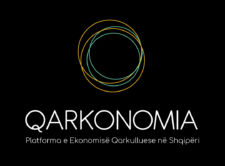© 2024 Qarkonomi. Created for free using WordPress and Kubio
Biodiversity
Biodiversity loss is one of the most pressing environmental challenges of our time, with species disappearing at an alarming rate. A major underlying cause of this crisis is our current linear economy, which is characterized by its extractive, wasteful, and polluting nature. Shockingly, more than 90% of biodiversity loss can be attributed to the extraction and processing of natural resources.
To address this urgent issue, we must fundamentally transform the way we produce, use, and consume goods and resources. While conservation and restoration efforts are vital, they are not sufficient on their own to halt and reverse biodiversity loss. We need a paradigm shift that goes beyond traditional conservation approaches.
The circular economy offers a promising framework for such a transformation. By embracing principles that eliminate waste and pollution, circulate products and materials, and regenerate nature, we can create an economy that is restorative and regenerative by design. This shift has the potential to create conditions where biodiversity can thrive.
In a circular economy, waste and pollution are designed out of the system. This means that products are designed to have value post-use, ensuring they can be reused, recycled, or composted rather than ending up as waste in the environment. For example, rethinking the design of plastic products can prevent them from polluting our oceans and harming marine life.
Furthermore, circulating products and materials in the economy reduces the need for extracting virgin resources. For instance, extending the life of clothing through innovative business models can reduce the demand for new textiles, thus preserving land that would otherwise be used for cotton cultivation or other resource-intensive activities.
Additionally, regenerative practices in agriculture, such as agroecology and agroforestry, can help rebuild biodiversity. These practices not only sequester carbon in the soil but also improve soil health, increase biodiversity in agricultural landscapes, and reduce the need for expanding agricultural land into natural habitats.
By adopting the principles of the circular economy, we can address the root causes of biodiversity loss and create a more sustainable future for our planet.
Reference:
© 2024 Qarkonomi. Created for free using WordPress and Kubio



